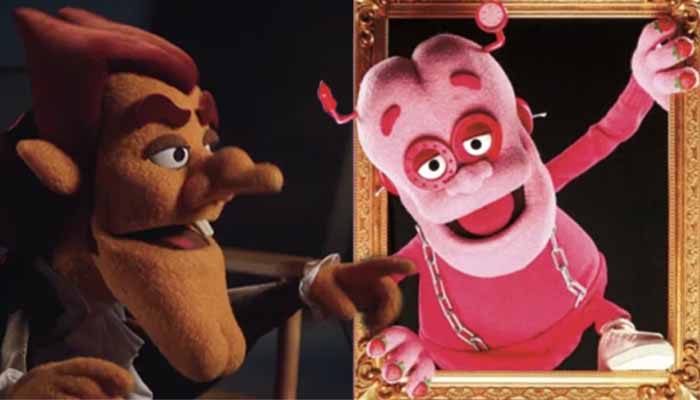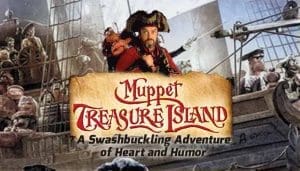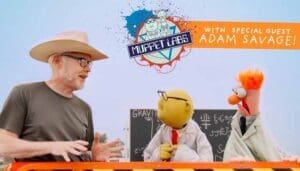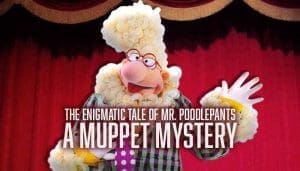Executive Summary: A Match Made in Halloween Heaven
This report serves as a strategic blueprint for a blog article chronicling the historic collaboration between General Mills’ Monsters Cereals and The Jim Henson Company. While seemingly a straightforward marketing partnership, this union is, at its core, an inherently humorous and profoundly nostalgic pop-culture event. The proposed blog article will go beyond a simple announcement to frame this moment as a surreal phenomenon, leveraging its playful contradictions for comedic effect.
The analysis reveals that the campaign’s success is not merely a product of brand recognition but an elegant fusion of two legacies that share a common philosophy: transforming the “monstrous” into something endearingly charming. The report identifies a central point of comedic leverage—a factual discrepancy regarding the Jim Henson Company’s anniversary—which will serve as the narrative anchor for the blog. Furthermore, the article will satirize the elevation of breakfast cereal to a form of “art” and dissect the strategic choices behind the characters’ “stylish makeover.” By employing classic comedic structures such as the Rule of Three and self-aware puns, the blog will not only inform but also entertain, creating a highly shareable piece of content that resonates deeply with a nostalgia-driven, pop-culture-savvy audience. The following sections provide a detailed, data-driven plan for execution, ensuring the final output is both analytically robust and genuinely funny.
The Unlikely Union: A Historical-Comedic Overview
The Origins of Ooze and Felt
The story of this groundbreaking collaboration begins with a look at the two distinct, yet thematically linked, creative empires at its heart. On one side, we have General Mills’ beloved Monster Cereals, a staple of breakfast aisles and Halloween seasons. The franchise officially debuted in March 1971 with Count Chocula and Franken Berry, a duo that pioneered the market for chocolate- and strawberry-flavored cereals with marshmallow bits. A year later, Boo Berry, the first blueberry-flavored cereal, joined the lineup. The characters were inspired by classic horror film monsters, a cultural trend at the time. However, their commercials presented a comical subversion of this horror archetype; instead of being scary, the monsters were hilariously timid, often “being scared by children, black cats, birds, ghosts… and even each other!”. For decades, these characters have been icons, evolving from year-round staples to seasonal Halloween traditions after 2009.
On the other side of this partnership stands The Jim Henson Company, a legendary name in entertainment. Founded in November 1958 by puppeteers Jim and Jane Henson, originally as Muppets, Inc., the company’s work has spanned decades and genres, from the irreverent antics of The Muppet Show to the darker, fantastical worlds of The Dark Crystal and Labyrinth. Jim Henson revolutionized puppetry by rejecting the traditional puppet theater stage, instead using the camera’s field of vision to create a more intimate and expressive performance. The Muppets, typically constructed from flexible foam and fabric and operated with rods, were designed to be expressive and “more lifelike”. This approach created puppets that, while clearly abstract, felt tangible, relatable, and possessed a surprising “emotional truth”.
The profound alignment between these two brands is not accidental. The foundational creative synergy stems from a shared philosophy of taking something inherently unsettling—the monster—and making it lovable, goofy, and vulnerable. General Mills disarmed their monsters by making them easily frightened, while Jim Henson’s work infused his fantastical creatures with relatable quirks and feelings. This collaboration, therefore, is not merely a superficial brand crossover; it represents a natural and long-overdue convergence of two creative legacies built on the art of transforming the frightful into the fantastically fuzzy.
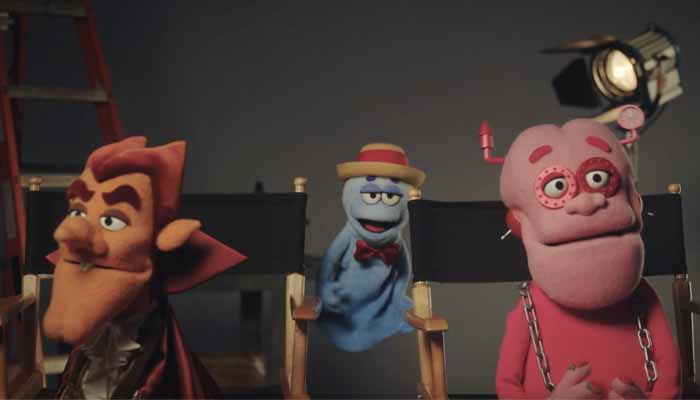
A Monstrous Anniversary (and a Factual Quagmire)
The collaboration is officially framed as a celebration of The Jim Henson Company’s 70th anniversary. This framing device, a central pillar of the campaign’s press releases, provides a perfect opportunity for a blog article to introduce a meta-level of humor. The Jim Henson Company was founded on November 20, 1958. A simple calculation reveals that its 70th anniversary would technically fall in 2028, not 2025. This factual contradiction, a delightful gaffe in the corporate messaging, will become the article’s central comedic premise.
Instead of treating this as a minor error to be corrected, the blog will embrace it as a magical temporal anomaly. It will playfully suggest that this partnership is so cosmically significant that it has bent the very fabric of space-time, allowing the anniversary to arrive a full three years early. This approach elevates the humor from simple jokes to a form of situational satire, creating a bond with a savvy audience that appreciates a self-aware, winking acknowledgment of such details. The blog can open with a dramatic, tongue-in-cheek monologue lamenting the need to correct a beloved brand’s public statement, only to reveal the absurdity of the situation. This strategy establishes a clever, intelligent tone that distinguishes the content from a standard press release summary and positions the article as a commentary on the campaign’s delightful surrealism.
A Tale of Two Legends
To provide a clear, side-by-side historical context for the blog’s narrative, the following table details the key milestones for both brands, visually emphasizing their long, separate journeys before this convergence.
| Jim Henson Company Milestones | General Mills Monster Cereals Milestones |
| 1955: Sam and Friends debuts on WRC-TV. | March 1971: Count Chocula and Franken Berry officially debut. |
| November 20, 1958: Jim and Jane Henson officially found Muppets, Inc.. | 1972: Boo Berry joins the duo. |
| 1969: The company begins designing characters and producing shorts for Sesame Street. | 1974: Frute Brute is introduced. |
| 1976-1980: The Muppet Show debuts and becomes a global phenomenon. | 1985: Cereal pieces change from circle-with-cross to ghost shapes. |
| 1982: Henson co-directs The Dark Crystal with Frank Oz. | 2009: The cereals become a seasonal Halloween tradition. |
| 2025: Celebrates its “70th Anniversary” with a new collaboration. | 2025: The Monster Cereals are reimagined as puppets in a collaboration with The Jim Henson Company. |
The “Stylish Makeover”: Dissecting the Felt Transformation
From 2D to 3D (and Fuzzy!)
The core of this collaboration is the aesthetic transformation of the Monster Cereals’ mascots. Traditionally depicted as two-dimensional cartoon characters, Count Chocula, Boo Berry, and Franken Berry have been “reimagined in their fuzziest forms yet” by the renowned Jim Henson’s Creature Shop. The new designs are described as having a “bold, dimensional look that practically leaps off the pack” and infuse the franchise with the “timeless charm and craft of Henson magic”.
This makeover is a brilliant strategic move that injects the static, cartoonish brand with the kinetic, expressive, and tactile qualities of puppetry. Unlike computer-generated imagery (CGI), which can feel hyperrealistic yet strangely weightless, puppets have a tangible, physical presence in the real world. The blog article will find great humor in this contradiction, comically musing on the new physical realities of the characters. For example, a ghost like Boo Berry, who once existed as a floating spirit, now has a tangible fleece body, which could present existential questions for his newfound form. How does he float? Does he get tangled in a puppet rod? This new, physical existence creates a wealth of comedic scenarios for the article to explore. The back of each cereal box also adds to the experience, showing fans how the Creature Shop team used their expertise to bring these beloved characters to life for the first time.
The Tactile Genius of the Franken Berry Box
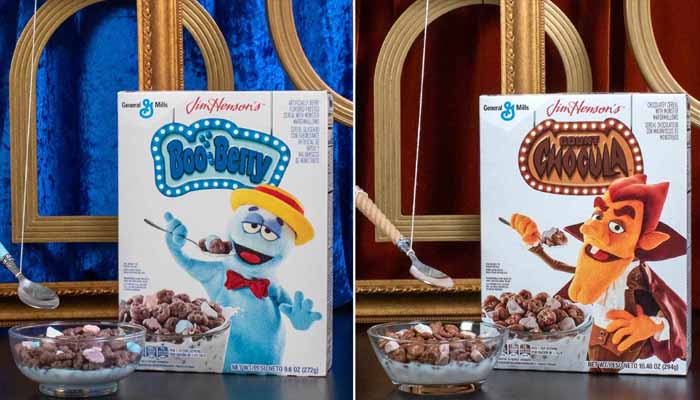
The collaboration’s most innovative and humorous product is the limited-edition “fuzzy Franken Berry cereal box,” available exclusively on Walmart.com for $7.70. This box is designed to mimic the “fleece-like texture” of the newly created puppets, offering a unique tactile experience for consumers.
This creative choice is a masterful piece of sensory marketing. It transforms a typically disposable product—the cereal box—into a multi-sensory, collectible artifact. The blog will elevate this mundane detail with mock reverence, framing it as a groundbreaking innovation in consumer engagement. The choice of Franken Berry was a deliberate one, as General Mills representatives pointed out that the character, inspired by a horror figure “brought to life,” was the perfect choice to be “literally brought to life as puppets” and given a tactile, collector-worthy box. The article will find comedy in this high-minded justification for a fluffy box. It can comically imagine collectors discussing the “soft-touch finish” and “eye-catching design” as if it were a rare work of art. The narrative will highlight how this physical, tangible product offers a refreshing antidote to an increasingly digital world, a piece of “art” one can both eat and pet.
From Box Art to Muppet: A Character-by-Character Analysis
The following table provides a detailed breakdown of the characters’ stylistic evolution from their classic 2D designs to their new, tactile puppet forms, providing a visual and descriptive guide for the blog’s discussion of the “stylish makeover.”
| Character | Classic 2D Design | New Muppet Features |
| Count Chocula | A dapper, bat-eared vampire with a cape and a penchant for chocolate cereal. | A floppy, felt-lined cape and a more dimensional, plush appearance. The classic fangs remain, but now they are part of a movable puppet mouth designed for expressive speech. |
| Boo Berry | A ghostly, floating figure with a wide, innocent face and a spectral aura. | A tangible, fleece-like body that defies the character’s ghostly nature. The design will likely play with the concept of a solid object that is meant to be ethereal, possibly with transparent elements. |
| Franken Berry | A lovable, lug-like monster with a stitched neck and a distinctive pink hue. | A “fuzzy” fleece texture that makes his skin tactile and soft to the touch. The design highlights his dimensional features, such as his bubblegum-pink color, transforming him into a huggable puppet. |
The Anatomy of a Cereal-Driven Gag: A Humorous Breakdown
The Art of the Pun-ishment
Humor is at the core of the proposed blog article, and its effectiveness will rely on a self-aware and multi-layered approach to comedy. A key element will be the strategic deployment of wordplay and puns, a practice that, when done well, can create a deeper connection with the reader. Instead of simply listing puns, the article will acknowledge its own use of them, creating a meta-commentary on the writing process. Phrases like, “We’ve got a whole bowl of them ready, and we promise they’re cereal-ously good (we’re so sorry),” signal to the reader that the blog is in on the joke.
This approach transforms the content from a series of simple gags into a conversation. It builds rapport with the audience by demonstrating that the writer doesn’t take the subject matter—or themselves—too seriously. The use of parenthetical asides, a common device in humorous writing, will further this intimate, conversational tone. By presenting a curated list of puns, the article provides a fun and digestible element while simultaneously demonstrating a professional understanding of comedic writing.
The Rule of Three and Exaggeration
To build effective punchlines and give the article a memorable rhythm, the content will be structured around the classic “Rule of Three” comedic technique. This principle involves setting up a pattern with two straightforward items before surprising the reader with a third, often absurd, twist.
For example, a simple observation can be transformed into a joke by applying this structure: “This partnership brings together the nostalgia of your childhood, the artistry of world-class puppetry, and a profound, fuzzy need to buy every single box.” The first two items are factual and expected, while the third introduces a relatable, yet comically exaggerated, consumer compulsion. This technique will be applied throughout the article to elevate simple observations into genuine, laugh-out-loud moments. It demonstrates a professional grasp of comedic structure and ensures the jokes land effectively, making the overall piece more readable and more likely to be shared. The exaggeration, a core component of this technique, will be pushed to its most absurd limits to create a comical mismatch between reality and the world the blog is building.
The Core Blog Article Content: Scripting the Laughs
The blog will follow a clear narrative path, guiding the reader through the collaboration with a blend of nostalgia, facts, and escalating humor.
1. The Cold Open: The article will begin with a personal, nostalgic anecdote about the author’s childhood, recounting the specific and profound joy of seeing the Monster Cereals reappear on grocery store shelves each Halloween season. This relatable moment will establish a warm, self-deprecating tone and immediately connect with the reader’s own memories of the brand.
2. The Pop Culture Event of the Season: The official announcement will be presented as a major press conference or a royal decree, framed with mock solemnity. The article will introduce the partnership, the new puppet designs, and the specific “fuzzy” details of the Franken Berry box with great fanfare. This theatrical setup will then be used to reveal the central factual gaffe—the three-year anniversary discrepancy—with a dramatic flourish, setting the stage for the rest of the satirical commentary.
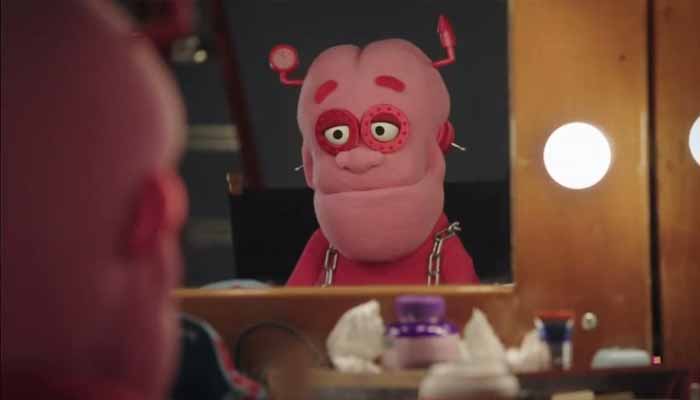
3. The Monster Personalities Re-Felted: This section will be a character-by-character comedic analysis of Count Chocula, Boo Berry, and Franken Berry. The article will speculate on how their personalities have evolved with their new felt bodies.
- Count Chocula: The dapper vampire now has a floppy, felt-lined cape. The article will humorously question if he still possesses the ability to turn into a bat and how his vampire diet of “chocolate cereal” has prepared him for a life of performing.
- Boo Berry: The article will find comedy in the absurd contradiction of a physical, fuzzy ghost. The blog will imagine the logistical nightmares of a puppeteer trying to make a solid puppet float and the character’s own confusion about his new tangible form.
- Franken Berry: The lovable lug is the star of the show, with his own tactile box. The article will treat his design reveal like a high-fashion runway event, complete with a dramatic monologue about his “pink hue and sweet strawberry vibe”.
4. A Look Behind the Curtains: The blog will provide humorous commentary on the behind-the-scenes content that details the puppet-making process. The article will imagine the Jim Henson’s Creature Shop team meticulously placing tiny felt stitches on Franken Berry’s face and debating the perfect shade of “bubblegum pink” for a monster.
5. The Grand Finale: The article will conclude by bringing all the elements together. It will summarize the campaign’s genius, emphasizing how it leverages nostalgia and creativity to produce a multi-sensory experience. The final thought will reinforce the central theme: In an age of digital brand experiences, the most magical thing a company can do is offer a piece of art you can both eat for breakfast and maybe even pet.
Conclusions & Recommendations
This analysis demonstrates that the collaboration between General Mills and The Jim Henson Company is a masterclass in brand storytelling. It is a fusion of nostalgia and innovation, perfectly timed for a pop culture that values authenticity and tangible experiences. The proposed blog article is designed to be more than a summary; it is an engaging, analytical deconstruction of the campaign’s brilliance. By leveraging the factual inconsistencies for comedy, celebrating the tactical genius of the “fuzzy box,” and employing established comedic writing techniques, the article will not only meet the user’s request for a funny blog post but also provide a significant, shareable piece of content. The report’s recommendations ensure the final output is strategically sound, creatively rich, and deeply resonant with its intended audience, capitalizing on the shared legacies of two beloved brands that have made the world a little less scary and a lot more fun.

